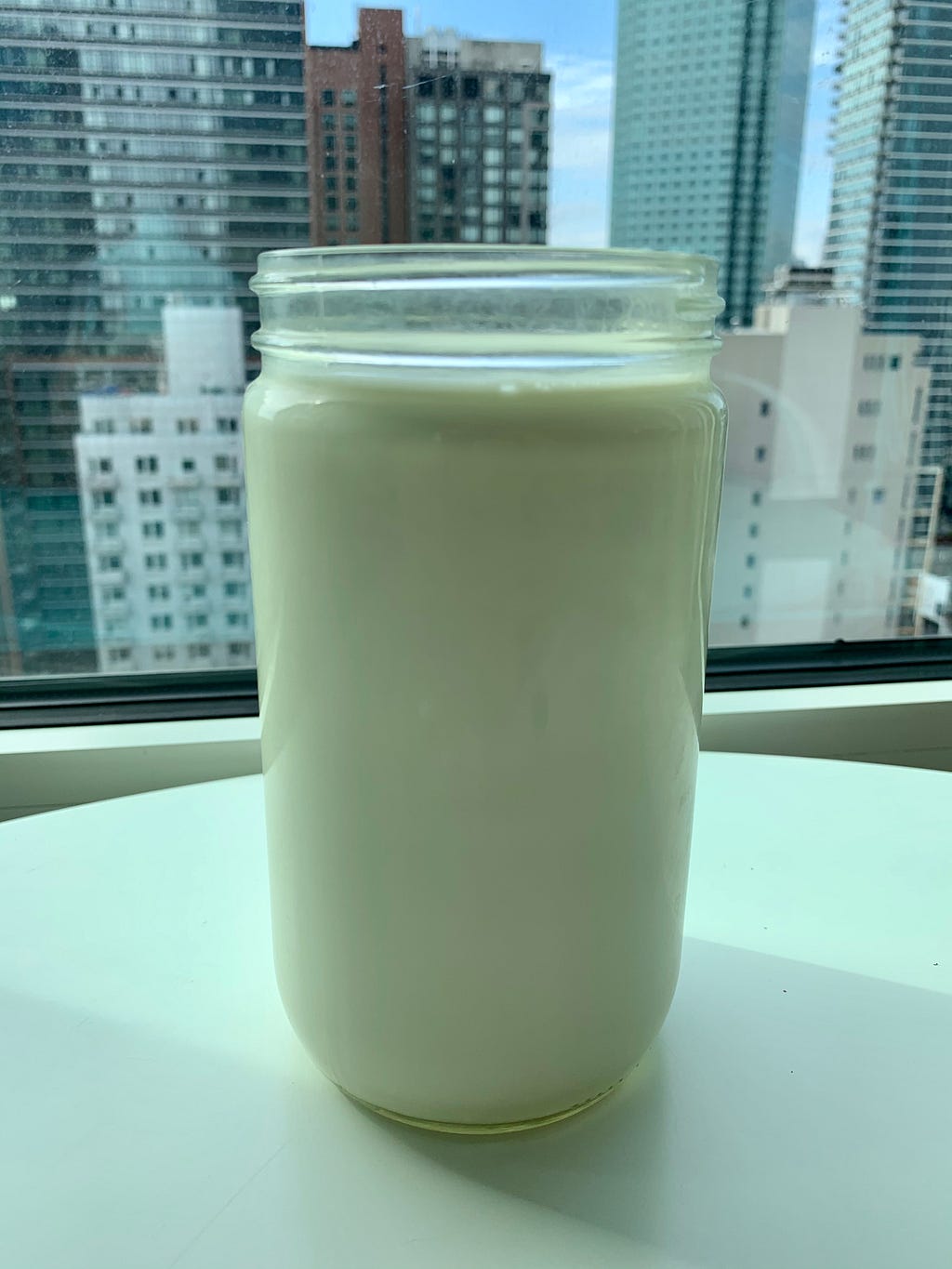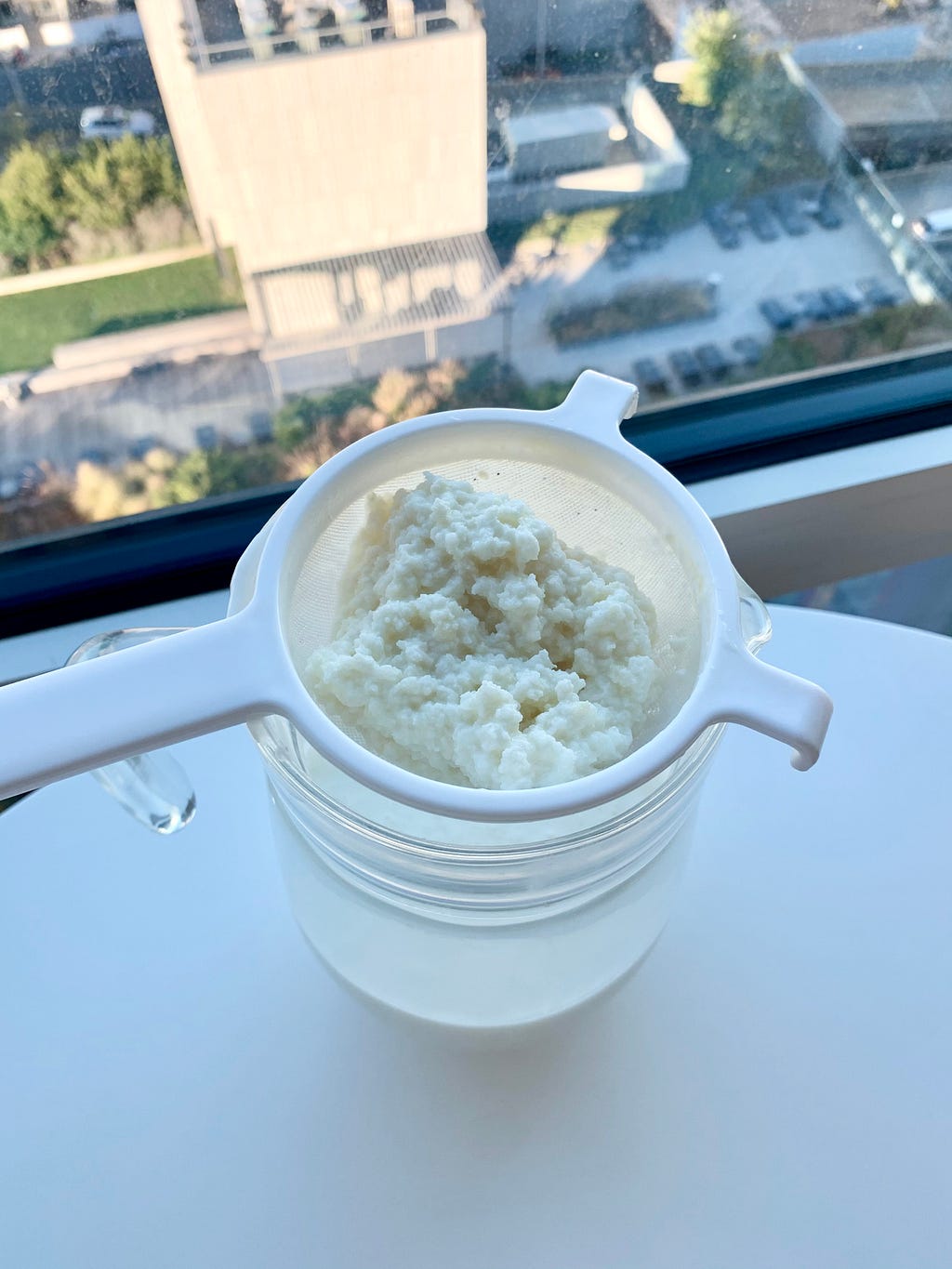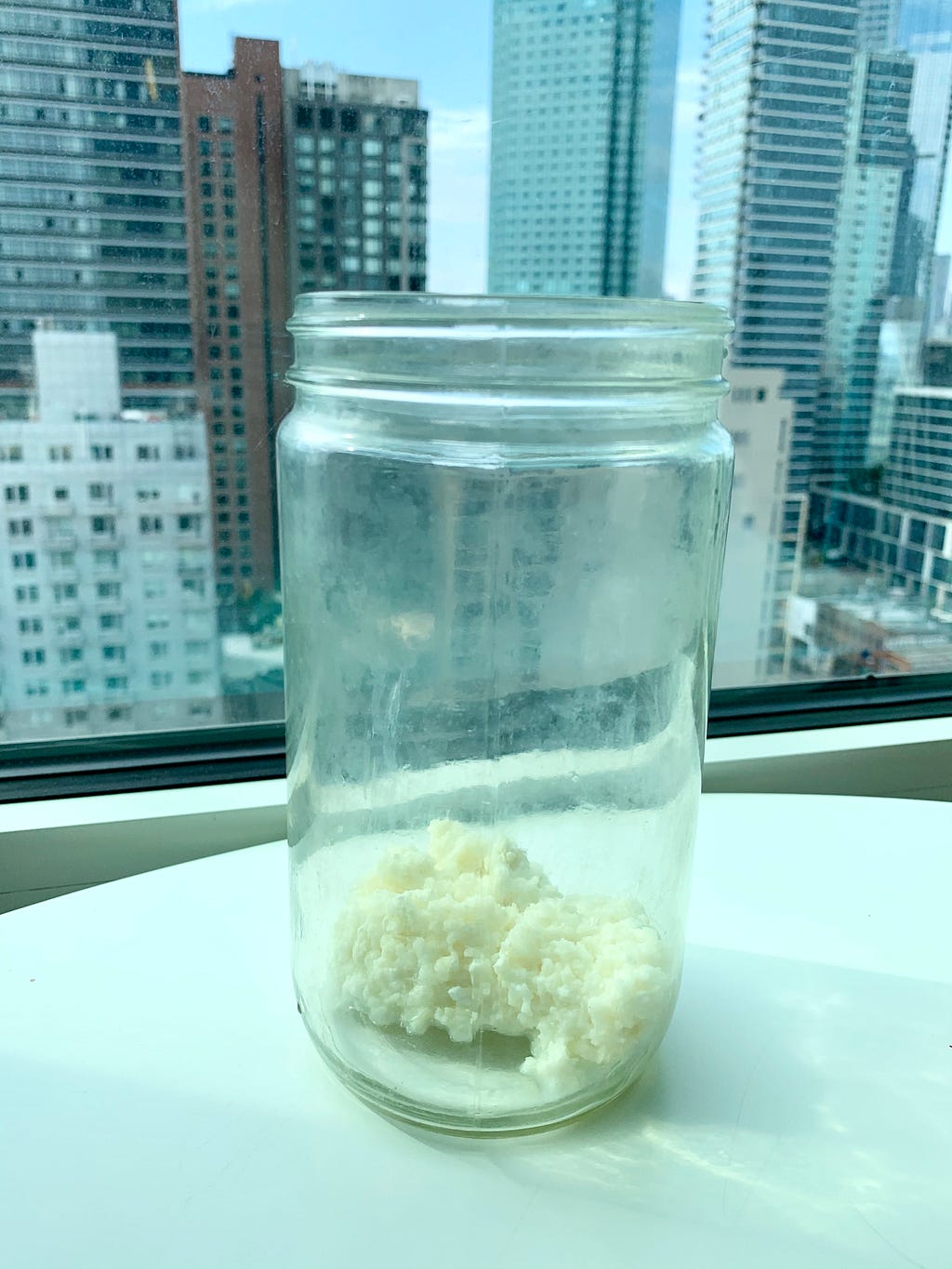Kefir has seen a rise in popularity in westernized nations lately, especially amongst the fitness, health, and nutrition communities. What is kefir? It is a fermented milk beverage that is popular in Russia, and which originated in the North Caucasus mountains. A short history:
Kefir originated in the North Caucasus mountains over 2,000 years ago. Legend has it that the Prophet Muhammad gifted the kefir grains to the Orthodox Christians of the region and strictly forbade them from instructing others on how to make kefir.
Kefir is made by putting kefir grains in milk, letting it ferment, and then straining the kefir from the grains. Kefir grains are not in fact grains, but a colony of yeast and bacteria. How are kefir grains made? Nobody actually knows and nobody has been able to reproduce them. It is believed that the original kefir grains formed out of milk that was stored in sacks of animal skins. Or, if the legend is true, they are a divine gift.
Because the secret of kefir was so closely guarded, and the grains were prohibited from being distributed, kefir was not widely known. Russian researchers believed kefir to have several medicinal properties such as aiding in digestion, promoting longevity, and even curing tuberculosis. Eventually, the All Russian Physician’s Society became so determined to obtain kefir grains to make kefir available to their patients, that they commissioned the Blandov brothers from Moscow Dairy to obtain the grains from the people of the Caucasus mountains.
The tribes of the mountains refused to sell any kefir grains, so the Blandov brothers hatched a plan: send a beautiful, young woman to charm one of the princes of the region, Prince Bek-Mirza Barchorov, and persuade him to give her some kefir grains. They sent one of their employees, Irina Sakharova.
Irina did in fact succeed in charming Prince Bek-Mirza Barchorov, but fearing punishment, he refused to give her any kefir grains. As Irina and her partners realized they were not going to obtain the grains, they attempted to depart the region. However, as Prince Bek-Mirza Barchorov did not want to lose the company of Irina, she was kidnapped by tribesmen and taken back to him, and was told she was to marry him.
Fortunately for Irina, she was rescued from the forced marriage as the Blandov brothers mounted a successful rescue mission. Understandably unhappy with being kidnapped, she brought a case against Prince Bek-Mirza Barchorov to the court of Tsar Nicholas II. The Tsar ruled that the prince was to give Irina ten pounds of kefir grains as compensation. She took these grains to Moscow Dairy, and in September of 1908 kefir was commercially available for the first time in history.
How to Make Kefir at Home
Making kefir at home is extremely easy. All you need are:
- Kefir grains (https://amzn.to/3ouKEW6)
- Whole or raw milk
- Large jar
- Cheese cloth (https://amzn.to/3cEmGF8)
- Piece of string or rubber band
- Nylon mesh strainer (https://amzn.to/3S1iOOs)
- Bowl/pitcher/large jar
- Wooden spoon or small spatula
- Mason jars (https://amzn.to/3J363is)
Steps
- Put your kefir grains in a large jar.

2. Pour milk over the kefir grains. Use either whole or raw milk (I do not recommend ultra pasteurized milk as the kefir will not ferment as well, and you will not get a thick texture).


3. Cover the jar with a layer of cheese cloth. Seal with a piece of string or a rubber band. Let the jar sit at room temperature for 24 hours.

4. Fermentation is now complete! Remove the cheesecloth, stir up your kefir and grains, then strain your fresh kefir from the grains into a bowl/pitcher/large jar.



5. Pour your freshly strained kefir into a mason jar, seal it, and store it in the fridge until you are ready to drink it.


6. Put the grains back into the large jar, pour milk over them, cover with cheesecloth, and repeat!


Notes
Health Benefits
When milk is fermented with kefir grains and becomes kefir, it becomes much easier to digest, making the nutrients more bioavailable. Kefir is high in calcium, B vitamins 1 and 12, biotin, folate, vitamin k2, and probiotics. The high probiotic content improves digestion as well as reduces inflammation.
First Batches
Depending on the state of your newly acquired kefir grains, it may take a few ferments to create a thick, creamy kefir. Keep following the process and your kefir grains will grow as the milk will nourish them, and will soon produce a quality kefir.
Double Fermentation
You may also let your kefir go through a “second fermentation.” This is done by straining the kefir from the grains, sealing the kefir in a jar, and letting it sit for another 24 hours at room temperature.
A second fermentation will make the kefir thicker, less sour, and more carbonated. Additionally, this second fermentation will increase the nutrient profile of the kefir. There will be more probiotic bacteria, increased levels of B vitamins 1 and 12, increased levels of biotin, increased bioavailability of magnesium and calcium, and a reduced level of lactose.
Straining Kefir from the Grains
You may be wondering why a nylon mesh strainer is recommended. The reason is because it is a nonreactive material. If a metallic strainer is used, the metallic ions may interact with the acidic kefir grains, which is bad for the kefir grains and the consumer. Stainless steel is said to be ok as it is nonreactive, but can be abrasive on the grains, which is why I prefer nylon.
Carbs in Kefir
There is a lot of confusion in regards to the carb content in kefir. Due to government nutrition label rules, the carb content listed is that of the milk used pre-fermentation. Because the bacteria from the kefir grains “eats” the lactose during the fermentation process, the carb content is lower than what is on the label. According to Dr. Jack Goldberg, one cup of kefir has about 1 gram. Others believe the carb content to be between 4 and 8 grams.
Calories in Kefir
Fermentation also reduces the calorie content of kefir versus the original calorie count of the milk. Because the amount of carbs has been reduced by fermentation, so has the calorie content.
Calorie and Macronutrient Numbers I Personally Use
Pint (2 cups) of homemade whole cow milk kefir (raw or pasteurized):
- 240 calories
- 16g protein
- 8g carbs
- 16g fat
Pint (2 cups) of homemade whole goat milk kefir (raw or pasteurized):
- 280 calories
- 18g protein
- 7g carbs
- 20g fat
Please note that the links above are affiliate links. This means that, at zero cost to you, I will earn an affiliate commission if you click through a link and finalize a purchase.